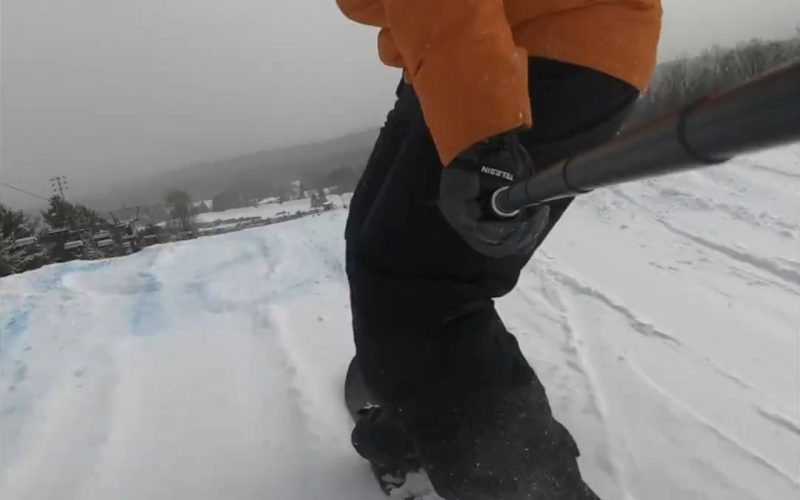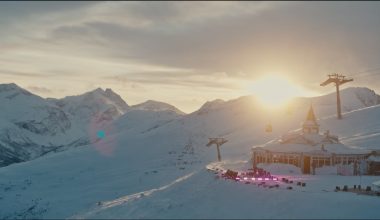So you’re into snowboarding and you’ve developed an interest this type of snowboarding: Terrain parks! If you were like me, oh man was this a big experience and learning situation for me. This article is perfect for you if you’re new to terrain parks (more specifically but not limited to) park jumps and you want to start or you have recently started going through it and you’re looking to overcome your fear of terrain park jumps.
Disclaimer: Safety is important and paramount and I would strongly suggest to learn snowboarding, much more for terrain park safety/use through qualified professional snowboard instructors. Treat this article as a "supplementary terrain park tips".
Background
I learned snowboarding ~6 or so years ago. So if you think about it I’ve only started terrain parks after the half of that. I learned terrain parks the hard way 😂 so much so that a Burton Impact Shorts is so worth it.
My first terrain park experience was a…~what people would call “huck and pray” or “huck and chuck” 😂 I highly highly would advise against that 😂 I took off a small jump, had too much air, went diagonal, and landed on my tailbone 😅 Mmm, yummy. Let’s just say I had to crawl out of the way in great pain (yes, that’s proper terrain park etiquette–see #2) and lie down on the side for 10mins.
I also have a thing with heights…kinda. It’s like, I have no fear of heights in terms of high buildings, airplanes (I travel a lot), but if I stare straight down through CN Tower’s glass floor or walk to a rooftop with little to know guard rails…HNGGGG omg. I get the same sensation with snowboarding when you get that height, look down, and you think “oh god that’s gonna hurt”. Then again maybe I fabricated this fear myself due to my first ever “huck and pray” experience.
I still am progressing through my terrain park jump skills (or overall snowboard skills in general) and these are the things I learned and some things people taught me that made my learning way better (and safer). All these are actionable points and ideas you can learn and do outside the terrain park.
Get (very) comfortable with speed
So the prerequisite for this is you have to know and be able to confidently slow down and stop. You should be able to slow down and stop on both edges.
Once you master that, you’ll gain more and more confidence in picking up more and more speed.
I would say if you can charge forward and go at full speed on a blue trail, I think that would be the “minimum requirement” if any. Of course be smart and don’t be zooming when it’s moguls, ice, or crowded trails. Be smart.
Why do I need this?
It’s not a hard requirement in fact I did parks before I got comfortable. But let me tell you the downside to that: I’d like to believe that I have great control on any trails. I rarely go full speed since I prefer control and side hits, rather than charging down fast (we’re not skiers). So when I got to the terrain park, my tendency was I was speed check so much to a comfortable speed but that “comfortable speed” is way less than what’s required to clear the jump. So it’s either I literally just fall off the jump, or slide back, or land exactly on the knuckle (not good for your knees).
Speed is a requirement. It’s not for style points. It’s like when you learned how to ride a bike. If you pedal and move slow, you will definitely have a hard time balancing. If you go, it’s easier.
So I did it in reverse and got myself comfortable with speed and I had much better park experience after.
Do this in any trail; just be safe.
Riding flat
Once you got speed right, now your next step is to be able to ride your board flat. Yes, you’ve probably been learning to move and use edge to edge (and that’s great!). For the most parts, those are what you’ll need. For terrain parks, you’ll need to learn this skill.
Yes as you become more experienced, people take off on their edges, but for now you need this(flat). Ps I've also been advised and I hear some people using toe edge. I've had a friend who is better than me in terms of skill level say this, even snowboardprocamp so I'm definitely trying to take this with serious consideration however personally I've never felt the need to engage my toe edge upon launching (maybe not yet?). My problems were never on the take off but rather spinning mid-air and landing. I however can see it if my friend meant "just a little bias to the toe edge" since that's what snowboardprocamp is suggesting as well; I'm guessing it's a counter balance or checker so that he board does not wash out. Nevertheless, riding flat is still within the foundations of what they/we're all trying to say
You should be able to get to a point where you’re riding your board flat (and that means your nose is pointing down the slope, and that means your board will pick up speed as fast as it can get).
Find an open trail where you can afford to do just that: a path where you can just point down and ride your board flat. You have to be able to comfortably do this at speed, and ideally no speed checks or going from one edge or another.
You’ll find that it’s a challenge because as you go flat, you then become prone to catch an edge on either side any time. Or as you start, you start to lose your balance/core control, and then you wiggle out, go on one side accidentally and then launch yourself forward.
Why do I need this?
In the beginning, if you take off on an edge (unless you’re intentionally doing this for a spin), there’s a high tendency of you sliding out of your edge and landing awkward.
For example if a snowboarder took off on his/her toe edge, you might slip off that edge just before or during your take off, and then you’ll be uncontrollable on air, and then you’ll plop down flat with your front body and receive the sweet, sweet nectar of gravity. The other factor why such a thing would occur is that when you’re on an edge. Your centre of gravity is not directly on top of the board. It’s leaning on one side hence you turn mid-air.
The science is simple: you want to take off balanced, with your centre of gravity on top of the board, so you can land balanced.
You also want to be able point your board directly down, confidently and fearlessly, gather speed, and then take off and land where you’re supposed to be. If you haven’t perfected this yet and let’s say for example you have a tendency to veer left when you’re attempting to go straight, what’s going to happen is you’re going to veer left on the ramp and god know where you’ll be landing; not to mention landing awkwardly/dangerously, most likely on an edge as a beginner :/ yikes.
Correcting your posture/center of gravity/balance
This leads me to my last tip: you have to be able to ride fast, ride flat, and keep your centre….well centre. Let me make sense of that:
The previous point talks about you centering yourself in such a way that you don’t fall one side: either your toe side or your heel side. So yes you want to maintain that.
In addition to that, I’m talking about two things: you should be able to squat and bend knees while keeping this centre of gravity and you should be able to maintain a proper snowboard posture/stance.
What stance/posture?
So get your snowboard right now and put it on the living room. Now step/ride on it as you would. Stand straight, bend your knees, look forward. I’m not talking about facing to the nose of the board but rather your forward. So if you’re a goofy (leading with your right foot), you would be facing perpendicular to the left of your snowboard.
Find your balance and don’t fall. So that would be the ideal stance you would want to have as you are about to take off the ramp.
The challenge here is that, as you snowboard, you don’t feel or realize it but sometimes you actually twist and turn your upper body to face the direction of where you are going. This is naturally but if it’s excessive and you don’t pay attention to this, especially on terrain park jumps, bad things will happen.
As you take off and if your upper body is turned forward on take off, your body will naturally try to straighten itself out. What’s going to happen is your lower body is sideways but then your upper is almost facing forward to the direction of where you’re going. What’s going to happen midair is your lower body will then also twist and turn forward midair so suddenly you’ll be landing on a heel edge braking position, which is not good.
My experience
This happened to me a lot and it was hard to correct. Now I learned to imagine that you’re using your forward shoulder to point on the direction where you’re going. Literally just put your leading arm down and imagine that you can only use your shoulder to point things. That’s how you do.
Ps, this is proper snowboarding advice anyways, when you go from one edge to another and you go from one direction to another, you should turn with your entire body, not just your lower body and end up twisted.
So as I take take on a jump and gather speed, I make sure that I’m doing just that, pointing down, pointing forward with my leading shoulder where I want to go (which is straight down in the middle). This way I maintain the stance as I go airborne.
Bonus tip: being airborne
This one is actually hard to describe and prepare for and besides it’s a fun, tummy-tingling experience you want to have, trust me. I can’t really prepare you for this. What I can suggest is practice on side hits (small bumps on the side of trails).
You can even do this on a more controlled manner: just go on a flat surface, possibly at the base lodge, and then pop or ollie ( I say pop to start) from flat ground/snow! Your challenge here is you should be able to pop/jump off your board balanced and land balanced. On first attempts you might find yourself just accidentally sliding out instead of jumping or you’d be able to jump but then as you land, you’re still finding your centre so you slide out one way and fall on your ass.
Wrap Up
As you learn all these tips, you’ll be better equipped to try on the terrain park. Don’t mistake this. These are not the only things you need to know in the terrain park. Please familiarize yourself with terrain park etiquettes, safety gears and procedures, and watch other people and see how fast they’re hitting a jump so you can mimic it (and not land too far or too short).
Launching yourself and sending it is a cool experience and I can’t wait for you to enjoy that. But as you get confident and comfortable with the tips above, the only thing left for you to experience is the weightlessness feeling. And if you do it right, you will experience it and still land safely!
Remember, it’s just the basic equation of:
take off at the correct speed + take off balanced
(and then even if you don’t do anything midair, literally just stiffen up with knees bent), you’ll eventually make contact and land balanced.
Be safe and have fun!


